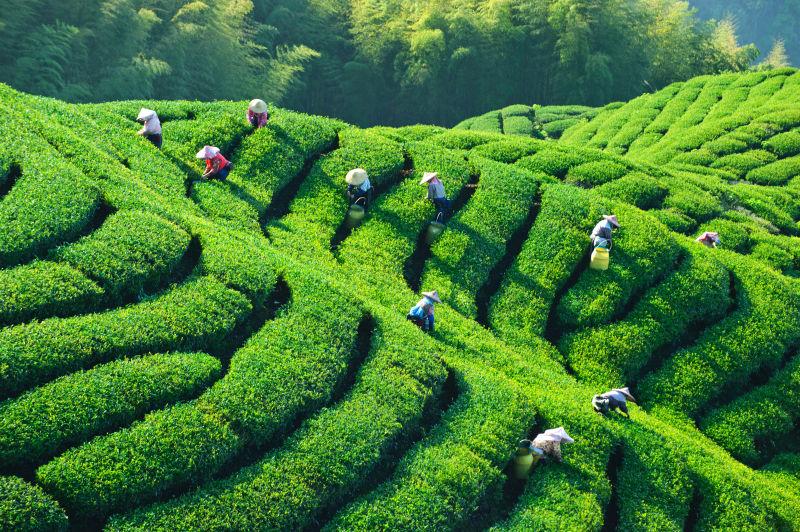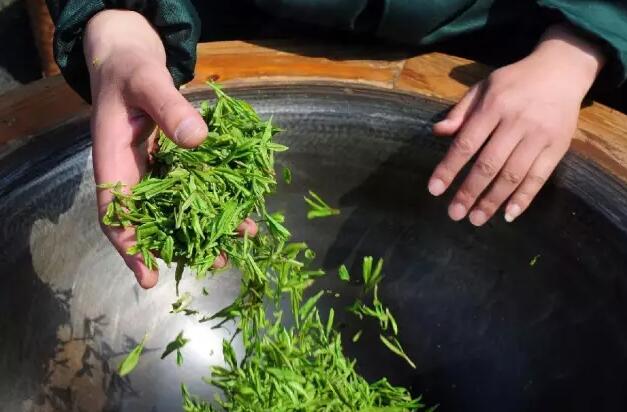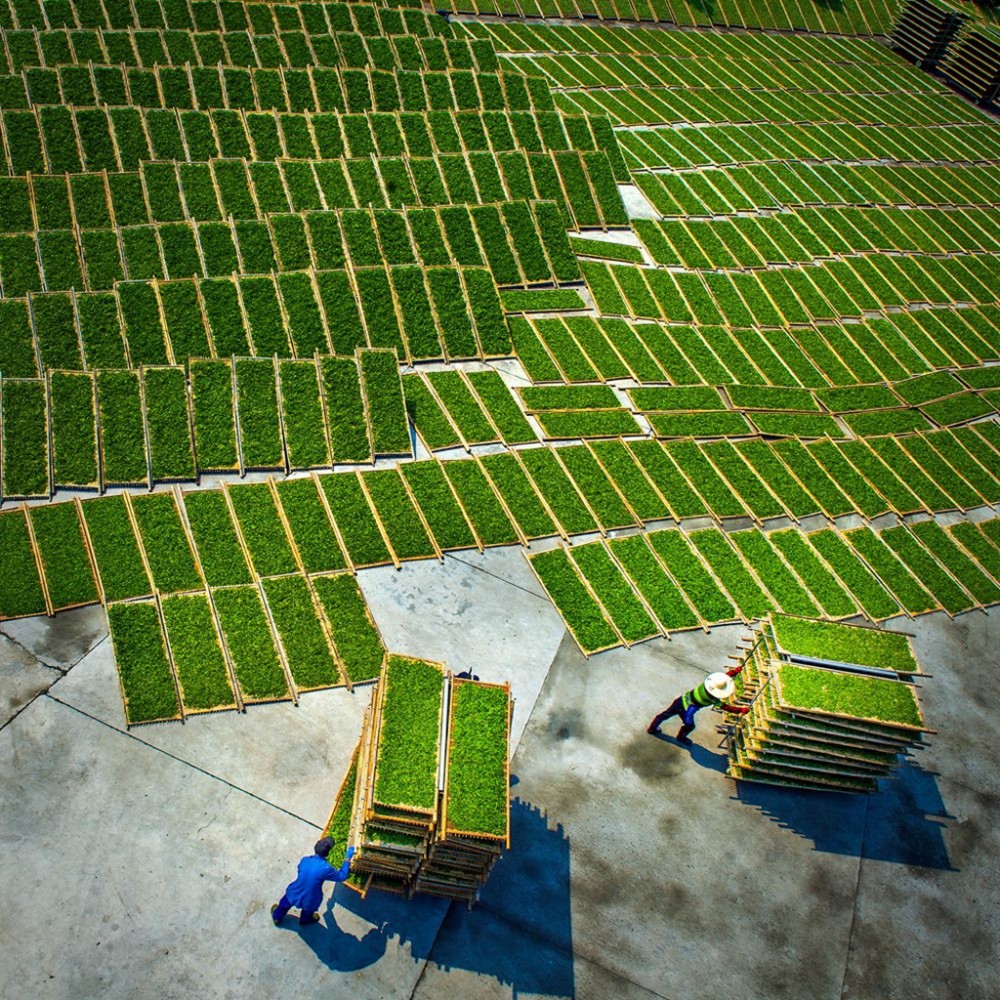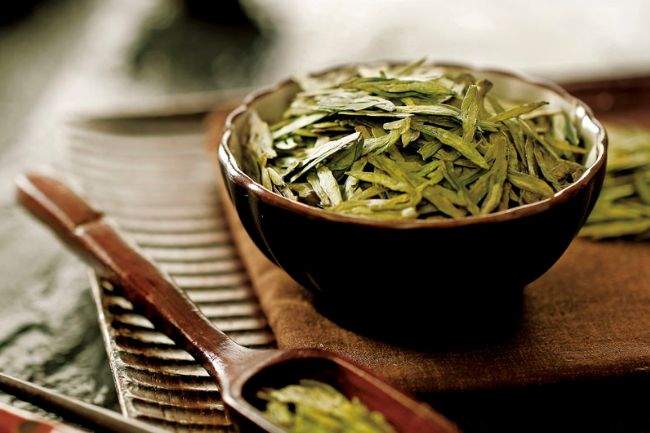The process of making green tea is simply divided into three steps: killing green (or fixation), kneading and drying. The key lies in the step of killing green, a way of heating the fresh leaves. It inactivates the activity of the enzyme, and the various chemical components contained are basically subjected to physical and chemical changes by thermal action without the influence of the enzyme, thereby forming the quality characteristics of green tea.

- Kill-green/Sha qing(杀青)
Killing Green, which means “Shaqing” in Chinese, plays a decisive role in the quality of green tea. Through the high temperature, the characteristics of the enzymes in the fresh leaves are destroyed, and the oxidation of polyphenols is prevented; at the same time, evaporating part of the water in the leaves makes the leaves soft and creates conditions for twisting and shaping. As the water evaporates, the low-boiling aromatic substances with green grass gas in the fresh leaves volatilize and disappear, thereby improving the aroma of the tea leaves.

Except for specialty teas which are made by hand, this process is usually carried out in machines. The factors that affect the quality of killing green include temperature, the amount of leaves, the type of machine, process time, and technique.
- Pan-fried green/Chao qing (炒青)
Due to the different effects of mechanical or manual manipulations during the drying process, different shapes such as long, round, fan-shaped, needle-shaped, and spiral-shaped are formed, therefore, according to the shapes, there are long fried green, round fried green, flat fried green, etc.
Long fried green is called eyebrow tea after refining. The finished colors include Zhenmei, Gongxi, rain tea, needle eyebrow and Xiumei, each with different characteristics. For the round fried green, the shape of the particles is round and tight. For the flat fried green, mainly produced in Zhejiang province, the most typical tea is Longjing.

- Roasted green/Hong qing (烘青)
It is dried in a specific oven. Most of the roasted green tea is refined after reprocessing, and it is used as a green tea base. The aroma is generally not as high as that of fried green tea. A few roasted green teas are of excellent quality. According to its shape, it can also be divided into strip-shaped tea, sharp-shaped tea, flake-shaped tea and needle-shaped tea. The strip-shaped teas are produced in all major tea-producing regions of the country; the sharp- and flake-shaped teas are mainly produced in Anhui and Zhejiang provinces. Among them there are special roasted greens, such as Huangshan Maofeng, Taiping Hou Kui, and Lu’an Gua Pian.
- Sunning green-Shai qing (晒青)
It is dried in the sun. Mainly distributed in Hunan, Hubei, Guangdong, Guangxi, Sichuan, Yunnan, Guizhou and other provinces with a small amount of production. Among sunning green teas, Yunnan big leaf species have the best quality, which is called “Dianqing”.

- Steamed green/Zheng qing (蒸青)
The use of steam for killing green is an ancient method in China. In Tang Dynasty, this method spread to Japan, and has been used since then. However, in China, fried green has been more popular since Ming Dynasty. Steamed green uses steam to destroy the enzyme activity in fresh leaves to form the “three green” quality—dark green tea color, light green tea soup and green tea bottom. Comparing to the fried green teas, the aroma is duller, and the astringency is also heavier. It’s not as fresh as the green tea fried in the pot. Due to the needs of foreign trade, China has also produced a small amount of steamed green tea since the mid-1980s. The main varieties are Enshi Yulu, produced in Enshi, Hubei; Chinese Sencha, produced in Zhejiang, Fujian and Anhui.
- Kneading/Rou nian (揉捻)
Kneading is a process of shaping green tea. Through the use of external force, the tea leave is broken and lightened, rolled into a strip, thus the volume is reduced and is easy to brew. Meanwhile, part of the tea juice is squeezed and attached to the surface of the leaves, which also plays an important role in increasing the taste of tea. The twisting process of making green tea is divided into cold kneading and hot kneading. The so-called cold kneading means that the green leaves are twisted after cooling; the hot kneading is the twisting while the green leaves are hot without cooling. The tender leaves should be kneaded cold to keep the bright yellow-green soup, while the old leaves should be kneaded hot to facilitate the tight knots and reduce the crumbs.
- Drying/Gan zao (干燥)
The purpose of drying is to evaporate the water and arrange the appearance to give full play to the aroma of tea. There are three drying methods: roasted drying, fried drying and sunning drying. Roasted drying process generally comes before fried drying. It is because that after twisting, the water content of the tea leaves is still very high, if it is fried directly, it will quickly form clumps in the pan of the frying, and the tea juice will easily stick to the wall of the pan. Therefore, the tea leaves are first roasted to reduce the water content to meet the requirements of pan frying.


